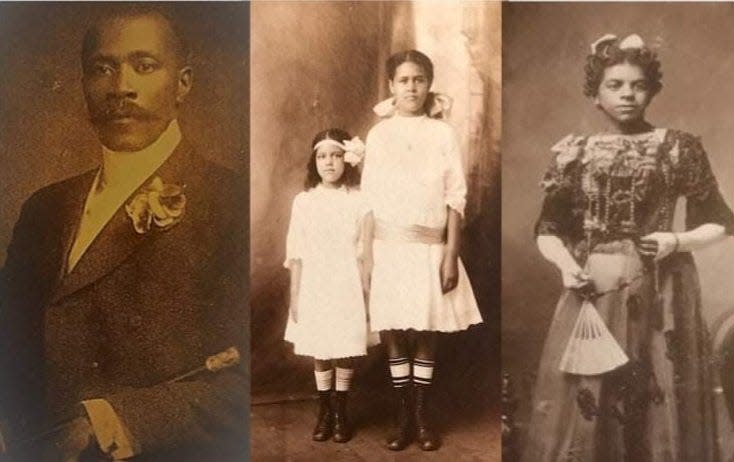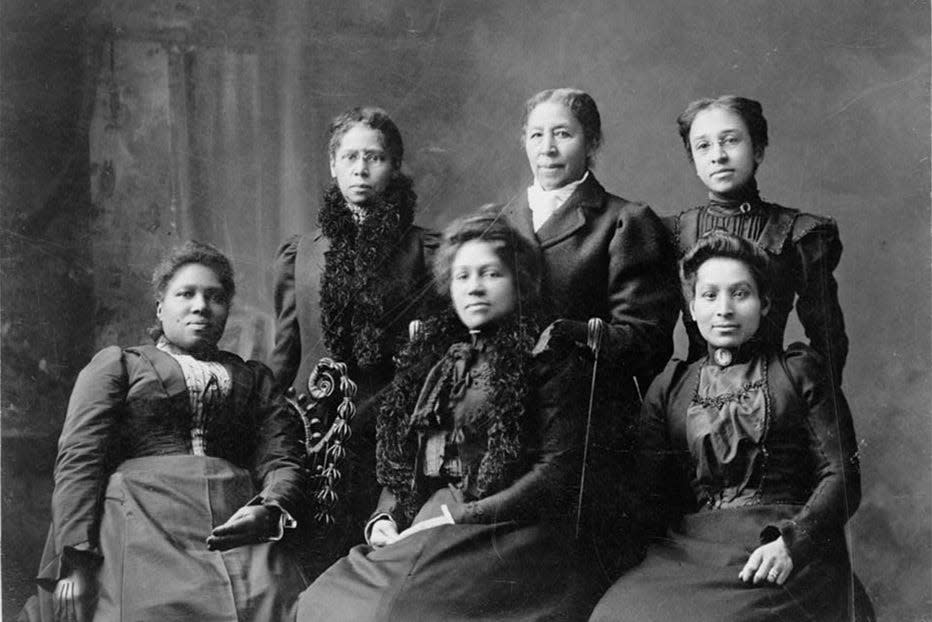HBO's 'Gilded Age'is fictional, this is what life was like for Newport's Black community
NEWPORT – Say the phrase “Gilded Age” and an image immediately springs to mind: mansions like Rosecliff, The Elms, and The Breakers, visions of a bygone era of spectacular opulence when Newport was the trendy summer playground for the Vanderbilts and other obscenely wealthy American families.
Wealthy, white American families that is.
However, one character in Lord Julian Fellowes’ HBO series “The Gilded Age,” which is set primarily in New York City but filmed primarily in Newport, offers a glimpse at a largely untold story of the era: Peggy Scott. In the show, Scott and her parents – a pharmacist and a trained pianist– live in a beautiful brownstone staffed with servants in a thriving African American neighborhood replete with social clubs, opulent celebrations and flourishing businesses.
Peggy Scott might not be a real historical figure, but the setting and details of her fictional life are drawn directly from the lived experience of African heritage communities in the United States, including Newport. As local historian and business leader Keith Stokes put it in the Twitter announcement of his upcoming Feb. 17 lecture on the Gilded Age experience of Newport’s African heritage communities, “we were always here.”
Stokes, who serves on the boards of numerous prominent local organizations, traces his family lineage back through the history of Newport for 11 generations; his ancestor Rev. Mahlon Van Horne was the pastor at the historic Union Congregational Church and became the first person of color to be elected to the Rhode Island General Assembly in 1885.
'The Gilded Age:Newport finds a bigger role as in season 2
Stokes likes to say African American history should be inspirational and aspirational.
During the Gilded Age, Newport was a prominent summer retreat for African heritage families
“Gilded Age Newport in Color is a historical interpretation of Newport from the vibrant African heritage community perspective. I have assembled reams of photographs, documents, and artifacts from the era, including an inventory of existing historic homes and structures that men and women of color once owned, largely within what today is called the 'Historic Hill' neighborhood,” Stokes said.

His lecture, scheduled for Friday, Feb. 17, will draw on a trove of documents and photographs from public collections and from his own personal archives to deliver to the NUWC Newport Division workforce a compelling account of the prominent African heritage communities who lived, worked, owned homes and business, and started tennis clubs, social clubs and churches in Newport. It will also cover the seemingly obvious but infrequently told story of Newport’s history as a prominent summer retreat for African heritage families.
"Lo and behold, communities in Newport such as Historic Hill, Top of the Hill, The Point, Memorial Boulevard, all those areas were largely African heritage during the Gilded Age,” said Stokes. “…There were four active African heritage churches by the turn of the century in Newport. I think this will be exciting for people because they will get to see homes that they weren’t aware of who might have lived or worked or worshipped there.”
On the set:How an army of Rhode Islanders helps bring HBO's 'The Gilded Age' to life
Delving more specifically into Newport’s local geography, he continued, “Most of Bellevue Avenue running from Kay Street to what is now Memorial Boulevard were black-owned businesses – and I’m talking about the 1870s and 1880s. It was black women who were dressmakers, men who were caterers, hairdressing, a variety of service industries. We had four black doctors in town at one point.”
Stokes explained Newport’s African heritage community also had its own tennis club, fishing club, and various social and civic organizations – the thriving community was not looking to assimilate into white institutions, but rather to use its own social, political and economic capital to build its own networks and institutions.

"I think what’s important here is it will show Newport in all its grandeur, but it will also show Newport had a vibrant Black African heritage community…I think it’s going to surprise people,” Stokes said.
You’re not really expecting a black woman to have a fashionable dress shop on Bellevue Avenue just as all these mansions are coming into being.
Therese Guzman Stokes’ co-founder of the historic consulting firm the 1696 Project – who also happens to be Keith Stokes' wife – will also be delivering a lecture in February. In her capacity as executive director of the Rhode Island Black Heritage Society, she will speak to a live and virtual audience at Marble House on Thursday, Feb. 9 as a guest of the Preservation Society of Newport County.

In her lecture, part of a presentation alongside Elaine Nichols from the Smithsonian National Museum of African American History and Culture entitled “Fashioning American: African American Designers and Dressmakers,” Guzman Stokes will focus on a dressmaker named Mary Dickerson who owned a business on the Travers block of Bellevue Avenue and founded the Women’s League of Newport in 1895.
“The interesting thing about her is she comes to Newport, opens her dressmaking shop, and she is often in the newspaper with her ads for the newest French patterns coming in…but none of her records exist,” Guzman Stokes explained to The Daily News. “We don’t know who her clients were other than by word of mouth…What we most know her for, is she was the founder of the Newport Women’s League. She was also the founder of the Northeast Federation of Colored Women’s Clubs, so she extended beyond Rhode Island – she opened that one in Boston.”
Visit Newport:RI Film and TV claims 'Gilded Age' will boost Newport tourism, but do the numbers add up?
“These clubs were not knitting clubs!” said Guzman Stokes, warming to the topic. “The women would get together and talk about the issues of the day, whether it was anti-lynching laws, women’s rights…to me, I find it fascinating that although she worked in what one would have considered a traditional industry for women at the time, she was reaching beyond that by founding these clubs. We think about the suffragette movement, we think about Susan B. Anthony, we think about all of these people in the early 1900s…(Dickerson) was doing this in the 1880s, a good 20 years before all of that.”
Zane Wolfang can be reached at zwolfang@gannett.com
This article originally appeared on Newport Daily News: Gilded Age in Newport 'vibrant Black African heritage community'

